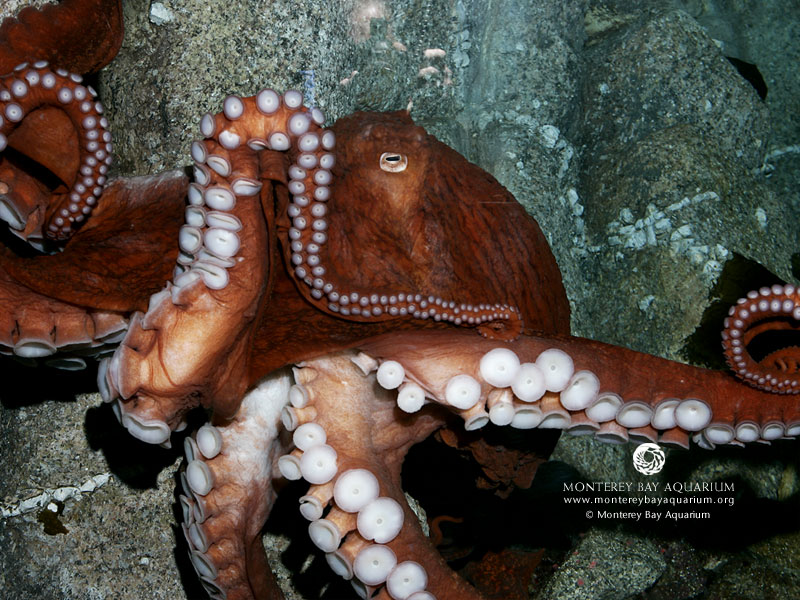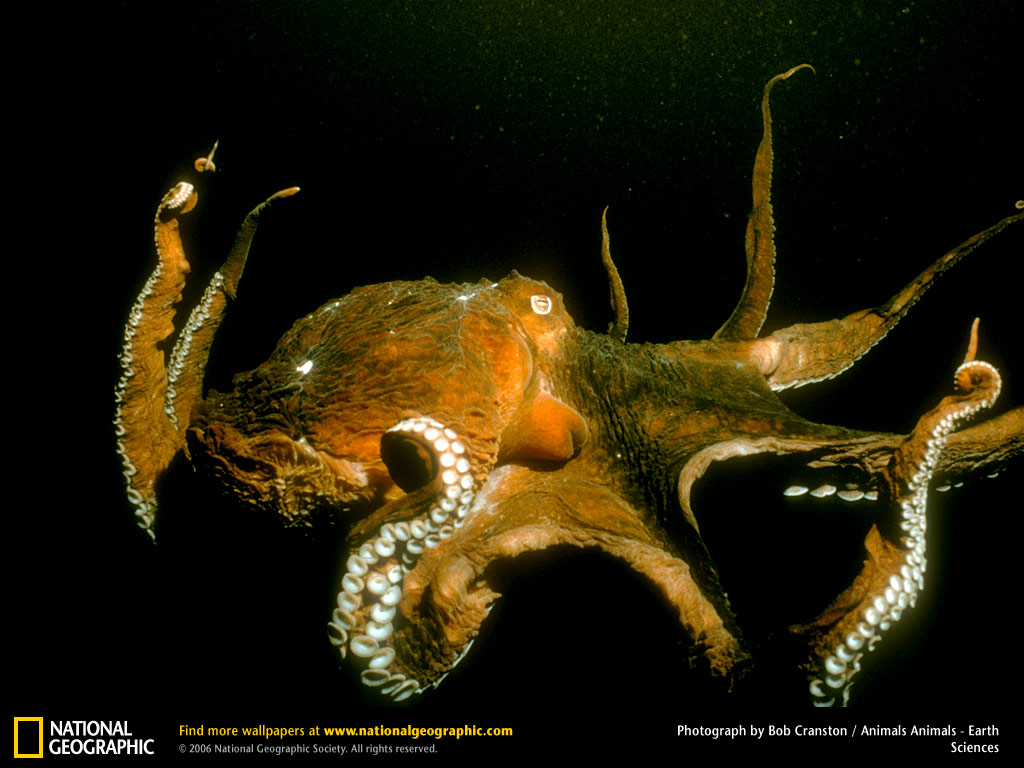
Molluscs are a highly diverse group, in size, in anatomical structure, in behaviour and in habitat. Representatives of the phylum live in a wide range of environments including marine, freshwater, and terrestrial habitats. Some of the species included in this phylum are squid, cuttlefish, and octopus. Some characteristics are a mantle, excretion, a single foot, and radial symmetry.
Common Name: Giant Octopus
Scientific Name: Octopus dofleini
Phylum: Mollusca
Family: Octopodidae
Genus: Enteroctopus
Species:Enteroctopus dofleini
Hawaiian Name: Octopus-He'e mauli
Description:. The giant octopus has a distinct longitudinal wrinkles or folds dorsally and laterally located on the body. The head is narrower than the mantle width. Each of it's arms measure over 6 feet and has a arm span of over 14 feet. Females are usually larger than males.
Size: 156Ib. and can be as big as 32 feet. But ususally less than 15 feet.
Habitat:Noth Pacific Ocean, California, coast of North Americas Pacific northwest, and Japan. Mainly inhabits
shallow coastel waters. Especially coral reefs.
Diet: The giant octopus usually feeds on bivalves, crabs, and lobster. They have also been observed eating fish, sharks, and even birds, but they will eat a wide range of food.
Physiological Features: A giant octopus contains three hearts, has the ability to regenerate corneal tissue, sucking disks, nerve fibers, has no protective outer shell, and the only hard part is their beak. Three defensive mechanisms are typical of octopuses: ink sacs, camouflage, and movable limbs.
Reproductive Cycle: .In some females, they are able to keep the sprems alive for weeks until her eggs are mature. After the octopi eggs hatch, the young larval octopuses must spend a period of time drifting in clouds of plankton, where they feed on larval crabs and seastars. After they are mature, they will fall to the bottom and repeat the cycle again.
